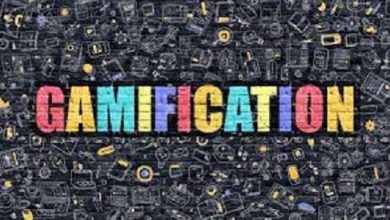What is an electronic signature its working and benefits
What is an electronic signature?
The electronic signature is a completely legal form that facilitates the management of contracts and forms within companies, streamlining processes and providing more efficiency.
Unsurprisingly, technology has changed the way companies work. Running around a company collecting signatures seems like a pretty tedious and bureaucratic job, doesn’t it?
Current solutions, such as electronic signature, allow much more control and efficiency over a process that would previously involve two parties and a notary’s office. Now, signing an important document is as complex as double-clicking your notebook’s trackpad .
Before understanding what an electronic signature is, we need to keep in mind the definition of signature in general, since signing documents is a common activity in the administrative routine of a company.
As a rule, when signing a document, we are authenticating that content, that is, proving that everything written there is true and complete. So, the signatory (the person signing, whether physical or legal), provides this guarantee of authenticity.
Thinking in this way, we see that the signature has a legal character in itself , because the subscriber freely declares that the information in question is true and credible.
Nowadays, people can sign documents by means of a pen signature or electronically, as both serve as legal artifacts.
Electronic signature technology is used to authenticate electronic documents using encrypted keys , something like a digital certificate of legitimacy.
Thus, entrepreneurs, employees and even customers can sign contracts, lists and documents in general in a simple, economical and efficient way, guaranteeing the total security of the record and those involved.
How does electronic signature work?
Now that you know that you can digitally sign any document, understand a little about how this technology works.
There are different types of electronic signatures and therefore different ways of signing a record. Today, we have platforms that are responsible for transmitting, storing and issuing the signature on the most varied documents.
It is important to note that this entire process, which used to be carried out manually, is now 100% online , by uploading and sending documents in PDF or Word.
1-What problems does it fix
To imagine how this was a necessary change, before, for two companies to sign an agreement, an employee from each of them would have to go to a notary to carry out the entire procedure.
With this new possibility, there are several savings for the company: the employee ‘s working hours , their displacement and notary services of registration of signature.
2-How the modern solution works
Electronic signature is a mechanism that guarantees the authenticity, confidentiality and integrity of electronic information. As we said above, it is a certificate that contains the data of an individual.
This mechanism even serves to prove the identity of a person , since it is possible to validate credentials when signing the electronic document. After all, data such as name, CPF, date of birth, RG (for individuals) and Corporate Name and CNPJ (for legal entities) are associated with an encrypted key.
If you are not familiar with the concept of encryption, it is important that you understand the following: the information exchanged is encoded in incomprehensible texts and can only be read by those who have the decryption key.
This is how the electronic signature takes the bureaucracy out of signing documents without leaving the security of traditional notaries aside!
It is worth mentioning that this type of signature encompasses any form of authentication that involves computational means. In this way, the signature can be done through login and password, biometric reading, IP recognition, digitized signature and digital signature. We’ll talk about that last one later on.
Who can use the electronic signature?
Because it is such a modern and practical solution, it seems that there are restrictions on its use. However, any company can employ it , regardless of its area of expertise or size.
It is possible, however, to identify certain segments in which the presence of this modality is more common.
Companies such as finance, real estate , schools and universities, insurance companies, as well as legal and telecommunications areas often use digital signatures to reduce bureaucracy in processes and offer a great experience to those involved.
And, within organizations, this solution helps — and a lot — the HR and DP routine.
What types of documents can be signed?
Electronic signature is excellent, and its technology allows the following types of documents to be signed:
- service provision contract ;
- lease or purchase and sale agreements;
- school enrollment;
- subscription to essential services such as internet, water, etc.;
- legal documents;
- insurance proposal;
- loan agreement;
- reports issued by companies ;
- bank credit note;
- health and dental plan contracts;
- Minutes of meeting;
- employment forms etc.
These are the main documents for which the electronic signature is used. It is important not to confuse it with the digital signature ; this way of verifying a document is used for contracts in general, reports, medical records, petitions and other more specialized services.
What are the differences between electronic signature and digital signature?
It is normal for a little confusion to arise when we talk about signing a document by computer means. Although they look like the same modality, as we mentioned, digital signature is a form of electronic signature .
Both have legal validity and we will talk more about this in the next paragraphs. Here it is important to understand that digital signature involves another type of technology, with complex mathematical formulas to generate identity authentication.
The digital signature is used to encrypt documents with a high level of security through a private key, PKI (which serves to encode and identify the author of that document) and a public key (to validate the signature).
This digital certificate is issued by a certification authority, controlled by the National Institute of Information Technology .
4 benefits of electronic signature for your business
As we mentioned before, the electronic signature allows the untangling of internal processes, eliminating tasks that waste the time of a highly skilled employee and making everything happen faster.
But these are the clearest advantages, there are some other benefits of electronic signature that cannot go unnoticed.
1. It is a solution for any type of business
We’ve already mentioned this, but it’s very important to stress: no matter what the niche, companies need to create and sign documents every day. Even micro and small companies, where management is usually more horizontal, need to issue documents.
Using digital files brings advantages to the company as a whole, because it optimizes the routine of several sectors.
2. Reduce paper consumption
Some companies produce a lot of waste and don’t even realize it. The high consumption of paper, whether for printing or to support the work developed, is something that does not suit companies in the 21st century.
This is because the search for efficiency is causing all services to be migrated to the internet, and documents, digitized.
In this way, the company earns by saving on printing and contributes to its growth and development based on sustainable practices.
3. Centralization
By having a solution to manage the signature of all company documents, the flow can be carried out digitally, and can even integrate the data with other systems.
It is also possible to build templates so that all records are standardized, facilitating the creation and understanding of all documents.
Also, because it is encrypted, the electronic signature cannot be forged or altered.
4. Agility and efficiency
Deep down, deep down, every manager wants to see the company’s processes running smoothly and without bottlenecks. With that in mind, solutions that facilitate essential activities tend to streamline day-to-day activities and generate greater efficiency.
With the electronic signature, it is possible to generate documents automatically, sign them and store everything in the cloud , reducing the slowness and facilitating the process — since the signature can be done by cell phone, anywhere.
How to use electronic signature in your company?
Of course, this text would not be without some examples of how you can already implement an electronic signature platform in your company.
1-signing of contracts
Subscribing to a service contracted remotely — for example, when a customer from São Paulo transacts with a company from Brasília — is one of the most frustrating and archaic activities.
Much simpler, isn’t it? And it is an alternative for those who are geographically separated, regardless of distance. This is the case for employees who work from home , for example.
2-Payroll subscription
Here’s another one of those scenes that no one wants to see inside a company anymore: a gigantic line at the door of the Personnel Department (DP) to sign the payroll.
Another common scene is a DP collaborator going to each person’s desk to have them sign the document.
No matter the scenario, they can all be avoided with a simple solution that saves everyone’s time.
Nothing is more demotivating than performing mechanical tasks when there are much more efficient solutions. Even more so when it comes to the DP, which has a particularly busy routine .
3-Timesheet subscription for home office employees
Once again, it makes no sense for a company that wants to be more modern and efficient every day to invest in solutions such as a local time clock.
This goes back to old models of work, when the employee was not involved in the decisions. Nowadays, companies tend to aim for a more humanized and people-centered way of management .
4-But what does this have to do with electronic signatures? We answered!
The solution allows the employee to easily sign the time sheet, even working from home . The problems with the lack of subscription are over, your HR and DP thank you.
When it comes to streamlining processes, the best way out is to offer a complete platform so that your team doesn’t have to use several solutions at the same time to receive a simple subscription.




